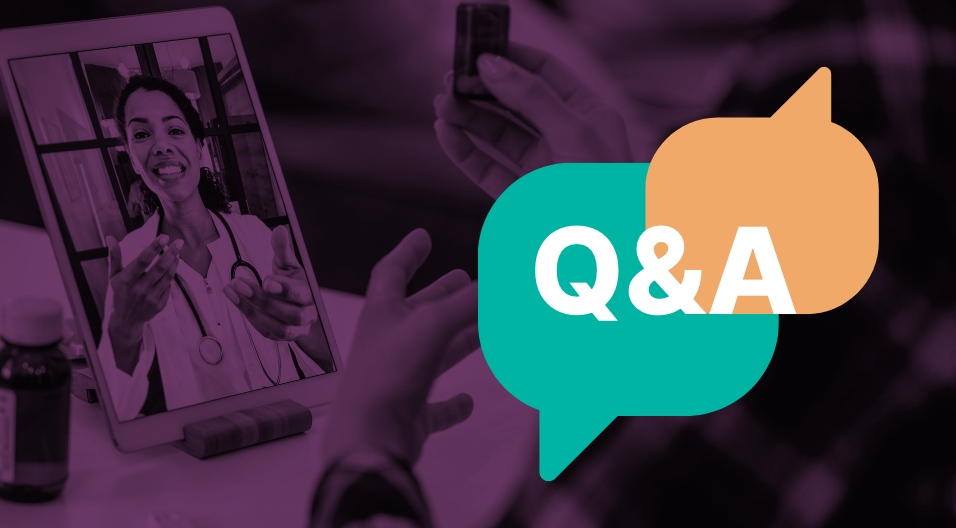Jeff Fuller, CipherHealth’s VP of Analytics Solutions and Joy Avery, CipherHealth’s SVP of Clinical Strategy recently joined the HIMSS Innovation Committee and The Beryl Institute’s Solution Advisory Board, respectively. The HIMSS Innovation Committee works to “produce content and tool sets and frameworks that can become public domain and remain accessible insights that can benefit a lot of people,” explained Jeff, while Beryl’s Solution Advisory board works to “highlight the best solutions available to improve patient experience across the continuum of care,” said Joy. The CipherHealth marketing team recently sat down with Jeff and Joy to get their take on the pressing issues in patient satisfaction and healthcare innovation today and how they connect to the work being done at CipherHealth.
Thank you both for meeting with us today. Jeff, one of the goals on the HIMSS Innovation Committee’s website is to “Examine the direction of innovation in healthcare and determine how we can evolve to meet the changing landscape.” Could you speak a little bit more to this?
Jeff: The Innovation Committee is collaborative and across industry; it’s about advocating for the correct application of innovative thinking as a way to get things done. I’ve been in the healthcare industry long enough to know that change is really slow and hard.
We try to force changes into the existing structures of the health delivery ecosystem. But, as you learn from other industries, a principle of innovation is that you don’t know the solution. Human beings love to solve problems but they skip the step of defining the problem.
Innovation is simple: it’s defining and coming around a problem together in order to open up new ideas and solutions, without being inhibited by traditional organizational structures and job responsibilities and the ways we’ve always done things before.
How does this tie into the work you’re doing at Cipher?
Jeff: We, as a company, need to define the path to innovation and transformation for patient engagement—which means changing your relationship with your patients and stakeholders in a way that breaks down the traditional clinical encounter and communications.
It’s thinking more broadly about people’s behaviors and their attitudes about their own health.
It’s having a patient engagement platform that can become a source of record for capturing conversations that are happening in their real lives and creating a new source of information to innovate from—this is what I’m focused on at Cipher.
You can’t innovate a clinical process without really knowing who your patients are. You’ve got to get to know your patients in their lives, not in the exam room.
Joy, is there anything you’d like to add to that?
Joy: I agree. We have to understand and know the culture—by region, by organization, the types of patients—and think about diversity, equity and inclusion. We have to adapt to each space with the tools we have.
My role at Cipher is to help build out best practice rounding strategies and scripts and ensure we stay on top of emerging trends, like COVID, for example. We worked quickly to put out scripts for telephone rounding, family rounding, outreach for COVID results, things like that.
We also worked on the current nurse leader best practice script and buried a couple of DE&I-like questions in it—they are asking about courtesy, respect and resources during rounding. We can get a great deal of information from the data that comes out of those interactions.
That’s knowing your community. That’s knowing your culture.
Joy, as Jeff just said, change in healthcare is really hard. Can you speak to that?
Joy: Yes, healthcare organizations seem to be the last and hardest to change. As a nurse for thirty five years, and working for twenty five years in the healthcare system, I know the resistance to change.
Change management is hard because, as Jeff said, healthcare leaders are often stuck in the idea, “We’ve always done it this way.” You have to get in there, look at their current workflows and try to really understand what their processes and pain points are, find their “wins” and celebrate what they’re doing correctly.
At that point, you have to have an action plan and accountability. Ultimately, I’ll always say that leadership has to be on board to create change. If they’re not, then it’s not going to happen on its own.
Jeff, what’s top of mind for you in healthcare innovation?
Jeff: As a committee, we are thinking about the patient’s journey along a continuum, including if they’re at home.
Science and technology have advanced to where we don’t have to have a traditional care setting for everything. Hospitals are, more and more, going to become centers of excellence for the specialties and the conditions that they’re managing.
But they don’t have to become the end all be all for the community. What would traditionally be an acute care admission can be managed with remote patient monitoring and virtual care. With the right amount of in-person check-ins, this is safer because you’re in your own home environment.
Also, we’re looking at patient communication—it should be happening in the same language and approach as it would anywhere in your care journey. So, thinking about digital rounding, if you’re in the home and you’re still receiving acute care from the hospital, then what are creative ways we can continue that conversation using our toolset?
I think communication is the key ingredient to breaking down the traditional walls of a hospital or clinic for care. Setting and extending our reach into the home in new ways really opens up lots of possibilities.
Joy, what’s top of mind for you in healthcare innovation?
Joy: I’m thinking about things as a caregiver, about how to keep family members informed, especially because I just went through a terrible experience with my father.
There are big problems with communication in hospitals—from physician to physician, nurse to nurse, and between departments. How can we help bridge these gaps and make families feel more secure and safe? Families are worried.
They’re asking, “Can I trust the people taking care of my family member?” I’m thinking about innovation on the patient experience side and how we can improve communication, build trust, and build relationships.
Can both of you talk about the clinical and analytics organization you’ve recently created within CipherHealth?
Jeff: We are positioning ourselves as the patient engagement leaders because we’ve been around longer and we’re touching more lives than any other solution in this sector. It is on us to take charge of the progression of where we’re going as an industry, to be the voice of authority and to become a center of excellence for good patient engagement.
Our organization covers all the best practices for patient engagement, whether it’s clinical data or partnering with like-minded companies that have solutions that work well with our platform. The corporate development team taps into our expertise and knowledge and makes it repeatable and scalable.
Joy: To add on, we are reaching out to SMEs across the country about reinventing that clinical advisory board and working strategically.
We want to get out there more and hear from our customers and our prospects and be a part of roundtables. Not just about technology, but about processes and emerging trends. We’re thinking about ways to help, new partnerships, and what we’re bringing with Pre-care.
We’re trying to close gaps in care with our customers, just as nurses at hospitals try to close gaps in care with their patients. It’s the same model.
Jeff: That’s a good point, Joy.
I would reemphasize that we’re not just selling solutions, we’re really maturing the practice of patient engagement to help grow trusting relationships between patients and health systems as well as staff and health systems.
In order to do that, we have to be a source of knowledge and share insights and best practices in addition to the solutions.








